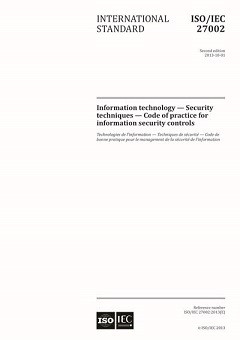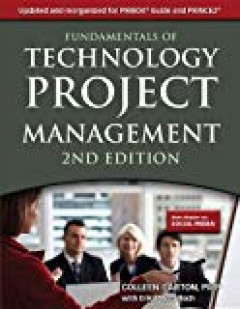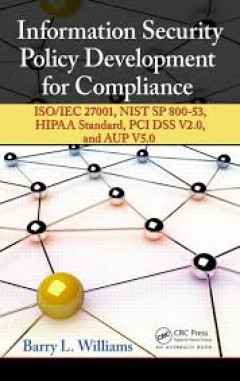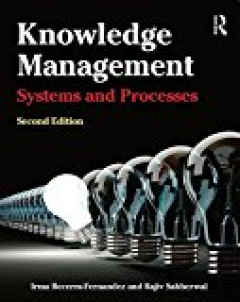Filter by

ISO/IEC 27002 -- Information technology -- security techniques -- code of pra…
Contents 0 Introduction 1 Scope 2 Normative references 3 Terms and of this standard 4 Structure of this standard 5 Information security policies 6 Organization of information security 7 Humas resource security 8 Asset management 9 Access control 10 Cryptography 11 Physical and environmental security 12 Operations security 13 Communications security 14 System acquisition, devel…
- Edition
- Second edition
- ISBN/ISSN
- --
- Collation
- vii, 80 hlm.; 30 cm
- Series Title
- --
- Call Number
- R005.8 ISO i

ISO/IEC 27003 -- Information technology -- security techniques -- information…
Contents 0 Introduction 1 Scope 2 Normative references 3 Terms and definitions 4 Context of the organization 5 Leadership 6 Planning 7 Support 8 Operation 9 Performance evaluation 10 Improvement Annex A (informative) policy framework Bibliography
- Edition
- Second edition
- ISBN/ISSN
- --
- Collation
- vi, 45 hlm.; 30 cm
- Series Title
- --
- Call Number
- R005.8 ISO i

Fundamentals of technology project management
Table of contents: Introduction 1. Concepts of Project Management 2. Project Management Methodologies 3. Project Initiation 4. Advancing Beyond the Greenlight 5. The Project Plan & Project Approach 6. Project Kick-Off 7. Project Design 8. Creating The Project Schedule 9. Project Development 10. Managing Obstacles and Risks 11. Managing Communication 12. Integration and Testing …
- Edition
- 2nd Edition
- ISBN/ISSN
- 9781583473399
- Collation
- xxiii, 705 hal.; ilus.; 23 cm
- Series Title
- --
- Call Number
- 658.404 GAR f

Advance in information systems set (volume 2): information and knowledge system
Table of contens: CHAPTER 1. INFORMATION SYSTEMS AND DIGITAL TECHNOLOGY 1 1.1. The concept of information systems 1 1.2. History of the concept of information systems 5 1.2.1. The centralized processing stage (1950s–1960s) 5 1.2.2. The data decentralization stage (1970s–1990s) 6 1.2.3. The interoperability and standardization stage (1990s) 6 1.2.4. The universality and globalization …
- Edition
- --
- ISBN/ISSN
- 9781848217522
- Collation
- xiii, 82 hal.; ilus.; 24 cm
- Series Title
- Information systems, web and pervasive computing series
- Call Number
- 004 ARD a

Information security policy development for compliance: ISO/IEC 27001, NIST S…
Contents: Introduction Entity-Level Policies and Procedures Access-Control Policies and Procedures Change Control and Change Management System Information Integrity and Monitoring System Services Acquisition and Protection Informational Asset Management Continuity of Operations Appendices: ISO / IEC 27001 (Annex A) Controls(c) ISO NIST S P 800-53 Controls HIPAA Security R…
- Edition
- --
- ISBN/ISSN
- 9781466580589
- Collation
- x, 142 hal.; ilus.; 24cm
- Series Title
- --
- Call Number
- 005.8068 WIL i

Knowledge management: systems and processes
Contents: 1. Introducing Knowledge Management 2. The Nature of Knowledge 3. Knowledge Management Foundations: Infrastructure, Mechanisms, and Technologies 4. Knowledge Management Solutions: Processes and Systems 5. Organizational Impacts of Knowledge Management 6. Knowledge Application Systems: Systems that Utilize Knowledge 7. Knowledge Capture Systems: Systems that Preserve and Form…
- Edition
- Second Edition
- ISBN/ISSN
- 9780765639158
- Collation
- xiii, 368 hal.; ilus.; 24 cm
- Series Title
- --
- Call Number
- 658.4038 BEC k

COBIT 5 for assurance
Created with today’s increasingly complex business and technology landscape in mind, COBIT 5 for Assurance can be used for many different purposes including: - Obtaining a view (based on COBIT 5 concepts such as the enablers) on current good practices on assurance - Learning how to use different COBIT 5 components and related concepts for planning, scoping, executing and reporting on vari…
- Edition
- --
- ISBN/ISSN
- 9781604203394
- Collation
- 318 hal.; ilus.; 30 cm
- Series Title
- --
- Call Number
- 658.4038 ISA c
 Computer Science, Information & General Works
Computer Science, Information & General Works  Philosophy & Psychology
Philosophy & Psychology  Religion
Religion  Social Sciences
Social Sciences  Language
Language  Pure Science
Pure Science  Applied Sciences
Applied Sciences  Art & Recreation
Art & Recreation  Literature
Literature  History & Geography
History & Geography